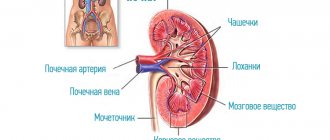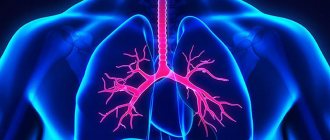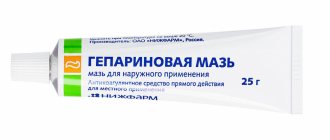22.07.2020
Most often, a viral infection takes us by surprise and attacks when you least expect it. There are situations when you simply categorically cannot be sick - people are counting on you, there are many things that require your participation. Is there any quick method that can help you heal in one day?
You need to immediately make a reservation: no matter what methods you use, it is impossible to completely get rid of a cold, recover from the flu or other ARVI in a day. But it is quite possible to help your immune system, relieve most symptoms and temporarily regain your ability to work. When urgent matters and problems are resolved, you can return to the calm pace of treatment at home.
How do you know if you have ARVI or the flu?
Anyone can get sick. Fatigue, stress and lack of sleep can make a hole in any immunity, no matter how powerful it is. The first thing you need to do is remember all the symptoms and determine what you are faced with. Why is it important? The fact is that express treatment methods work well with ARVI, but it’s better not to joke with the flu and allow yourself to get sick as long as necessary.
How to distinguish influenza from ARVI? The effect of the influenza virus is the easiest to diagnose. It does not stand on ceremony and strikes immediately, within the first hours after it has entered your body. It is manifested by headache, muscle aches, general weakness, chills and a sharp increase in temperature to 39-40 degrees. Typically, a dry, unproductive cough begins the very next day after infection.
The ARVI virus acts gradually, imperceptibly. The only thing he immediately gives away is sneezing. If you start sneezing frequently and for no reason, then most likely a runny nose will soon appear and a sore throat will gradually increase.
In adults and children, the symptoms of these diseases are the same.
So, where to start fighting the infection?
Flu symptoms in adults
The content of the article:
- The main symptoms of the disease in an adult
- How is the influenza virus and its forms transmitted?
- Possible complications and diagnostic features
- Basic treatment methods for prevention and recovery from influenza
The main symptoms of the disease in an adult
Influenza is rightly considered one of the most common and at the same time dangerous infectious diseases. It is caused by various influenza viruses and is characterized by damage to the respiratory tract. An important feature of the disease is the high risk of complications, including death, if urgent measures are not taken to treat the flu.
Several strains of influenza virus are isolated as pathogens (types A, B, C and D viruses according to the traditional classification). But the main symptoms of the disease differ very little. The seriousness of the widespread spread of the disease is clearly demonstrated by official WHO statistics. According to the organization, more than 100 million people suffer from influenza every year. Is it any wonder the relevance of the question of what are the main symptoms of influenza in an adult and how to properly treat an infectious disease.
The high level of danger of the disease in question is confirmed by the very rapid development of flu symptoms. They appear within one and a half to three days after infection with the influenza virus. The most obvious and noticeable signs of the disease are:
- hyperthermia, which progresses rapidly and is expressed in a rise in body temperature to 40 degrees;
- increased sweating, accompanied by chills;
- pain or pain in the eyes, profuse and causeless lacrimation;
- apathy, general weakness and loss of appetite;
- pain and discomfort in joints, muscles and bones;
- vomiting and nausea;
- some facial swelling;
- pronounced respiratory symptoms in the form of cough, runny nose, sore throat and sore throat, as well as nasal mucosa.
The rapid appearance of the above symptoms of influenza in an adult is complex. As a result, the disease is accompanied by several unpleasant and potentially even more dangerous syndromes. They do not appear in all patients and indicate a high risk of serious complications. First of all, we are talking about three syndromes:
- Intoxicating. It is expressed in a kind of “poisoning” of the blood with waste products of the virus and viral particles. The result is the development of febrile fever. Its symptoms are a moderate increase in body temperature, which varies around 38-39 degrees, and a clearly felt chill. Failures in the microcirculation system lead to the appearance of muscle and joint pain, frequent attacks of dizziness and severe pain that quickly spread throughout the entire volume of the head.
- Catarrhal. It appears approximately on the second to fourth day from the moment of infection with the influenza virus. Combines several symptoms, including a runny nose, nasal congestion and wheezing in the throat, which is often accompanied by severe pain. The situation is complicated by regular bouts of severe coughing, which result in nausea and vomiting. Often, catarrhal syndrome manifests itself in a subtle form, which complicates the diagnosis of influenza.
- Hemorrhagic. Occurs least often. Found in 5% of patients. It is expressed in pinpoint hemorrhages, which are the result of a sharp increase in the permeability of the walls of blood vessels.
The above symptoms of influenza - individually or in the form of syndromes - appear within 7-10 days. If the disease does not lead to complications, symptoms subside. The entire time period, from the entry of the virus until complete recovery, the condition of the sick person is accompanied by another syndrome - asthenic, which is characteristic of a large number of diseases. It is expressed in constant weakness, poor health, decreased performance and various emotional disorders, including various manifestations of a depressive nature.
The flu is not always easy to distinguish from a common cold. However, without taking urgent measures to treat the disease, the consequences for the body can be much more serious.
It is important to understand the difference between influenza and ARVI. Acute respiratory viral infection is a general name for a large number of diseases, many of which are rightly classified as colds and do not pose a significant danger. Influenza is one of the most severe types of acute respiratory viral infections, and therefore deserves a separate and more careful study and consideration in this article.
Interesting on the topic: Symptoms of COVID-19
How is the influenza virus and its forms transmitted?
The cause of the disease is the influenza virus entering the human body. It is transmitted either by contact or by airborne droplets (another commonly used name is aerosol). In the first case, there is direct contact with an infected person through a handshake, a kiss, or the use of shared objects, such as kitchen utensils. In the second, the virus group first enters the air when a patient breathes, sneezes or coughs, and then enters healthy people through the respiratory tract.
People pose a particularly serious danger during the first 24 hours after contracting the virus. This becomes a consequence of mild symptoms, allowing you to lead a normal lifestyle. At this stage of the disease, the patient has not yet contacted doctors or received treatment, and therefore the influenza virus remains at its maximum activity. According to some statistics, up to half of the people who come into contact with the patient at this time become infected.
Occasional outbreaks of the disease occur at any time of the year. Especially massive epidemics are typical for the autumn-winter period. Most of the notable epidemic outbreaks on a global scale first appeared in East Asian countries. It is in these countries that a specialist can observe climatic conditions that are most favorable for the constant circulation and, no less important, modifications of various viruses, including those that cause influenza.
Forms of influenza
With some degree of convention, three forms of influenza can be distinguished. They manifest themselves in different ways, and in the absence of timely medical care, a flow from mild to severe often occurs.
Lightweight
In this case, the symptoms listed in one of the previous sections appear slightly, and for a short period of time, not exceeding three to four days. The temperature does not rise above 38 degrees. There are no dangerous consequences or complications observed.
Medium-heavy
The most common form of the disease. Accompanied by all the usual symptoms and a pronounced intoxication syndrome. The main damage occurs in the upper respiratory tract.
The standard for such situations is high temperature – up to 39 or even 40 degrees. It, like other symptoms, persists for a week, sometimes longer. Complications and the danger of death exist only in the absence of timely initiation of therapy.
Heavy
An important and very characteristic feature of this form is the rapid development of the disease. All symptoms and intoxication syndrome appear almost immediately. The patient's body temperature rises to 40 degrees or more. It is accompanied by severe headaches, joint and muscle pain, often with an acute manifestation of photophobia. The febrile state persists for a week. Very likely complications relate to the cardiovascular and respiratory systems and really threaten the patient’s life.
Lightning fast
This form also has another name - hypertoxic, and is the most dangerous manifestation of influenza. It develops even faster and almost immediately leads to serious damage not only to the upper and lower respiratory tract, but also to the heart, central nervous system and lungs. If the patient does not receive immediate medical attention, the likelihood of death is high.
Possible complications and diagnostic features
Influenza is a disease of this type in which the percentage of complications is relatively small, but their development is accompanied by extremely unpleasant consequences that do not exclude death. Therefore, the timely provision of qualified medical care becomes especially important. In its absence, exposure to the influenza virus leads to suppression of the patient’s immune system and destruction of tissue barriers. The result is increased and simplified aggression of the resident flora in the body tissue.
Complications from the flu fall into two categories. The first includes pulmonary diseases, including:
- two types of pneumonia - bacterial and hemorrhagic;
- lung abscess;
- acute respiratory distress syndrome;
- empyema.
The second group includes extrapulmonary chronic diseases. It includes:
- sinusitis;
- otitis;
- bacterial rhinitis;
- tracheitis;
- meningitis;
- neuritis;
- viral encephalitis;
- Reye's syndrome;
- myocarditis;
- radiculoneuritis;
- toxic-allergic shock.
In some cases, in order to avoid the unpleasant consequences of the disease, it is necessary to contact an ambulance as quickly as possible. These include:
- secondary infection, when after the temperature drops to 37-37.5 degrees for one or two days, it rises again to 38 degrees and above;
- acute problems with breathing, when it is possible only in a certain position;
- severe pain during coughing in the area of the lateral ribs;
- coughing up sputum with blood (the main symptom is pink);
- loss of consciousness;
- lack of reduction in high temperature after three doses of medications intended to bring it down;
- febrile seizures (the patient's reaction resembles an epileptic seizure).
In any of the above situations, prompt action should be taken to call a doctor at home. The best option is to go to an ambulance. Only this approach will minimize damage to the patient’s health or even save his life.
Diagnostic features
Influenza is usually diagnosed by analyzing the traditional symptoms of the disease. If they are detected, laboratory diagnostics are carried out - both early and retrospective. It is required to confirm the doctor’s diagnosis and to differentiate influenza from other types of acute respiratory viral infections.
Basic treatment methods for prevention and recovery from influenza
Most of those infected experience the flu in a mild or moderate form. In this case, the disease goes away within a week, sometimes even faster - within 3-4 days. The main goal for the patient is to minimize harm to himself and others. To achieve it, you need to follow three simple rules, which include:
- Bed rest. Even a mild form of the flu should not be tolerated on your feet. This not only increases the risk of infecting other people, but significantly increases the likelihood of complications.
- Complete exclusion of contacts with strangers. Minimizing relationships with family and friends. The reason is obvious - the high risk of infection.
- No self-medication. Moreover, self-purchased drugs with unobvious effectiveness and very likely side effects. Prescribing and starting treatment for influenza, and in accordance with current standards and regulations of the healthcare system, is the function and task of a qualified physician. Naturally, taking into account the patient’s personal data.
The flu treatment methods used today involve taking several groups of medications. Among them:
- Neuraminidase inhibitors. Designed to suppress the activity of the virus, as well as reduce the ability to counteract the protective mechanisms of the human body. Reduce the manifestation of disease symptoms and their severity.
- Interferons and interferon inducers. They have immunostimulating and antiviral effects. They combine a large group of pharmacological agents. Not all of them have undergone clinical trials; some have clearly defined side effects.
- Experimental drugs against viruses. They appear on the market in large quantities and regularly. Therefore, the use of antiviral drugs is allowed only as prescribed by a doctor (as in other cases). Independent study of the issue and making decisions regarding the treatment of influenza in adults or children is not only ineffective, but also simply dangerous.
In parallel with the main medications, concomitant medications are used. Especially often we are talking about antipyretics, for example, ibuprofen or paracetamol. Their purpose is clearly demonstrated by the name - reducing temperature and intoxication of the body. It is important to remember that elevated temperature is one of the ways to fight the virus, and therefore antipyretics should be used as necessary and strictly in accordance with the attached instructions.
Today, there are no problems with being effectively treated for the flu, not only in Moscow, but also in any locality in Russia. The main thing is that the patient should consult a doctor in a timely manner and without delay.
Recovery after illness
Frequent consequences of the disease are weakness, sleep disturbances and lethargy, which are manifestations of asthenic syndrome. They are complemented by increased fatigue and low performance.
The easiest way to restore normal vitality and well-being is to organize and maintain a daily routine, ensure proper rest and try to avoid stressful situations. Particular attention should be paid to proper and balanced nutrition. It makes sense to supplement it with vitamin and mineral complexes, but only on the recommendation of the attending physician.
Flu prevention
In addition to effective treatment of influenza, attention must be paid to disease prevention. Today, vaccination is considered the most effective method, which has repeatedly proven its effectiveness in practice. Specialized influenza vaccines have been used for half a century. During this time, a huge amount of data has been accumulated, including objective clinical studies, which have confirmed their obvious usefulness and effectiveness.
Vaccination should be especially important for people at increased risk of contracting influenza and developing complications. The only serious drawback of the vaccines used today is their relatively short period of validity, about a year. Therefore, vaccination must be done several times, that is, annually - before the dangerous epidemiological season.
Don’t forget about general recommendations for improving health in general and immunity in particular. We are talking about proper nutrition, adherence to a routine, adequate sleep and active recreation.
Washing and rinsing: the first line of defense
When the first symptoms appear, there is a chance to neutralize the infection or at least reduce the intensity of the disease. This will help by rinsing your nose with a solution of hydrogen peroxide and gargling with sea salt or soda. To rinse the nasal mucosa, prepare a solution at the rate of 1 teaspoon of peroxide per half glass of warm water. To gargle, add one teaspoon each of salt and soda to a glass of warm water.
This is a recommendation for adults. If a child is sick and washing and rinsing in the usual way is problematic, then you can use pharmaceutical sprays with sea water.
Why do children often get the flu?
The cause of the disease is a small enveloped virus. It enters the environment when coughing, sneezing, and is deposited on surfaces. The pathogen enters the body through the respiratory tract. This happens in 2 ways:
- airborne - inhalation of air containing virions;
- contact – when touching the nose or face with dirty hands.
The influenza virus spreads in the air over a distance of 1-2 meters and can persist in a room for up to several days. Even before the first symptoms appear, an infected person becomes a source of infection. This happens regardless of whether he subsequently gets sick or not. This explains why outbreaks often occur in child care institutions.
Of course, one should not assume that attending school and kindergarten is the only reason for infection. The flu often “lies in wait for its victim” in places such as:
- shopping and entertainment centers;
- sections and circles;
- cinema, theaters, exhibitions;
- public transport;
- medical institutions.
Knowing that the epidemic begins to “gain momentum” in October-November, and the maximum incidence occurs in January-February, you can take care of your child’s health in advance. Talking about how to avoid getting infected with the flu, WHO representatives point out that timely vaccination prevents the development of the disease in 60-85% of people under 18 years of age.
Berry cocktail: a powerful dose of vitamins
Drinking plenty of warm water is a mandatory measure in symptomatic express treatment. It’s better to start with a fruit drink made from berries (raspberries, currants, lingonberries, viburnum). You can pour boiling water over frozen berries, crush them with a mortar and strain through a sieve. Usually, after such a cocktail, temporary relief of symptoms immediately occurs.
Then during the day you need to drink at least 2 liters of liquid - warm water with lemon, tea with honey, decoction of linden flowers, infusions of chamomile and other medicinal plants. If you want to get rid of a cold rather than help it, then eliminate coffee and sugary carbonated drinks.
Diagnosis and treatment of the virus
Influenza is diagnosed by clinical manifestations. If identification of the etiological factor is required, rapid tests are used to detect the viral antigen, tests of samples from the throat, nose, and the RT-PCR method. They are not mandatory for everyone, but they are necessary for patients at risk of developing complications. At JSC “Medicine” (clinic of Academician Roitberg) near the Mayakovskaya metro station, modern technologies and our own clinical diagnostic laboratory allow us to accurately diagnose, prescribe therapy, or, if necessary, hospitalize.
If a person is not in a high-risk group, influenza is treated symptomatically. Prescribe bed rest, plenty of warm drinks, antipyretic and antitussive medications, isotonic water for rinsing the nasal cavity and vasoconstrictor drops. Any cold and flu remedy must be prescribed by a doctor. In severe conditions and complications, treatment is carried out in a hospital.
Garlic and ginger are the best herbal disinfectants
Ginger is often used in the treatment of ARVI and influenza. Grated ginger root is an excellent disinfectant, warming and tonic. It can be added to tea, and infusions and decoctions can be prepared based on it. If you don't have stomach problems, you can use garlic. There is a proven recipe - squeeze the juice from several heads of garlic, then mix it with honey in a one-to-one ratio and take this remedy one tablespoon twice a day.
Sliced garlic releases phytoncides into the air, which neutralize the infection. You can place a plate of grated or chopped garlic next to your bed.
Sleep and proper rest
If you have caught the flu or ARVI and are going to treat yourself at home, then this condition is one of the most important. Most often, it is lack of sleep and lack of proper rest, combined with permanent stress, that causes the body to capitulate to infection.
Therefore, you need to act on the contrary - go to bed no later than 22 hours and get a good night's sleep. It is worth remembering here that it is no coincidence that bed rest is one of the first medical recommendations for infectious diseases.
An important point is that in order to ensure proper rest, you need to stop wasting time on your smartphone and computer. Give yourself a break from information. Dopamine fasting sometimes heals just as well as normal.
How long does a fever last for colds and flu?
The fever with influenza is present during the first 2-5 days, sometimes it lasts for a week5. Then the temperature gradually decreases to normal numbers5. If the fever lasts longer, this is a sign of possible complications. Influenza can be complicated by bronchitis, pneumonia, otitis media, sinusitis and pyelonephritis4. One of the reasons for this behavior of the virus is its ability to suppress the immune system. When the body is weakened, it becomes easy prey not only for viruses, but also for bacteria7.
Fever during ARVI varies depending on the pathogen:
- with parainfluenza, it may disappear as early as the next day, but sometimes the temperature remains elevated for up to 8 days5;
- respiratory syncytial infection is often accompanied by fever for 2-7 days5;
- with adenoviral infection, fever can persist for up to 3 weeks, and the temperature can either fall or rise again10
Up to contents
Changing your diet: the less the better
“You have to force yourself to eat”, “if you don’t eat, you won’t get well” - such attitudes from our childhood do nothing but harm. If you don’t feel like eating at all, you can skip several meals, this will only be beneficial. At such a moment, the body needs strength to fight infection, and not to digest and assimilate large volumes of food: this is why, with acute respiratory viral infections and flu, the first thing you do is lose your appetite.
During treatment, avoid heavy, fatty, multi-ingredient dishes. Replace them with broths and porridges made with milk. Eat more fruits, greens and vegetables. Sweet and starchy foods (“fast” carbohydrates) are contraindicated for viral diseases.
What drugs should I use?
The best answer is none. For influenza and acute respiratory viral infections, taking antibiotics does not make any sense, since they have no effect on viruses. If you are not a doctor, then taking medications on your own is a dangerous decision. If there are serious breathing difficulties, the temperature is high and does not go down with paracetamol, you need to call a doctor at home and then follow his instructions.
If you have a cough, you can do without drugs - mucolytics. Instead, you can use any of the following traditional methods:
- decoctions, infusions and inhalations from “chest preparations” (sage, thyme, licorice, calendula);
- black radish juice with honey (for this, a cavity is cut out of the top of a large radish, into which a spoonful of honey is poured);
- the famous Vietnamese balm “Sao vang”, which we call “Star” (for colds, applied to the bridge of the nose, chest and back).
Diagnosis of influenza
Typically, infectious disease specialists rely on characteristic clinical manifestations and weekly monitoring of morbidity. Certain clinical difficulties are presented by the similarity of the disease with other viral infections “walking” in the population:
- respiratory syncytial virus (or RSV);
- adenovirus;
- parainfluenza;
- rhinovirus.
Laboratory diagnostics help detect the influenza virus. The fastest method is the polymerase chain reaction (PCR). The method allows you to detect not only influenza, but also viruses with a similar clinical picture.
According to the instructions of the Ministry of Health of the Russian Federation, the diagnosis of influenza is confirmed based on 2 criteria:
- Clinical signs;
- positive PCR result.
A general blood test for influenza does not help establish a diagnosis. It reflects only the presence of inflammatory changes of a viral nature: relative lymphocytosis and neutropenia.
Stop list: what not to do in case of viral diseases
Drink alcohol and wipe yourself with alcohol. Viral diseases are already accompanied by general intoxication of the body. If you add alcohol intoxication to it, you will not speed up, but slow down recovery.
Reduce the temperature whenever it rises. An increase in temperature is one of the measures by which the immune system fights infection. Antipyretic drugs should only be used at temperatures of +38°C and above.
Avoid swimming and showering. During treatment, toxins are released through the skin through sweat, so you need to shower even more often than usual. The only exception is that at elevated temperatures it is better to use warm rather than hot water for washing and avoid hypothermia after a bath.
Do not ventilate the room for fear of drafts . The motto “sun, air and water are our best friends” is relevant not only for the healthy, but also for the sick. In case of viral diseases, it is especially important to maintain an optimal level of humidity in the house (40-60%) and ensure constant access to fresh air.
This point is so important that it is worth talking about separately.
Contraindications to the flu vaccine
- at least 6 months have not passed since the last vaccination;
- bronchial asthma;
- allergic reactions;
- iron deficiency;
- diseases of the respiratory system in acute or chronic form;
- allergic reaction to chicken protein;
- heart failure;
- endocrine diseases;
- blood pathologies;
- first trimester of pregnancy;
- severe renal failure;
- period of exacerbation of chronic diseases.
To prevent flu and colds, follow a few simple rules:
- Strengthen your immune system. Exercise more often or give your body light exercise. Take a walk in the fresh air, this will saturate your lungs with oxygen.
- Avoid hypothermia. This occurs due to a sharp temperature change and the action of the air conditioner.
- Use antibacterial agents, especially during cold season.
- Eat a balanced diet. This will provide the body with the necessary microelements.
Normal humidity and high-quality ventilation are the worst enemies of the virus
During the heating season, the air in the apartment is drier than in the Gobi Desert - about 15%, which is 3.5 times lower than normal. This air dries out the mucous membranes of the upper respiratory tract, reducing their protective function and making them vulnerable to viruses.
Equally important is normal air circulation in the apartment.
When a patient coughs or sneezes, an aerosol “cloud” consisting of tiny particles of saliva and mucus is released into the air. The virus uses these particles as transport, so if there is a sick person in the house, infecting the rest of the household is just a matter of time.
The likelihood of airborne transmission of infection is sharply reduced if modern supply ventilation is installed in the house.
Why is it necessary to distinguish between these diseases?
The group of people with weakened immune systems includes pensioners and children, people with chronic diseases. This means that their immune system is most susceptible to attack by pathogens. An incorrect diagnosis can lead to deterioration in the functioning of the entire body and incorrect treatment.
Due to influenza, the natural functions of the immune system are weakened, against the background of this, other infections can join and develop. These are mainly respiratory tract infections: the lungs are affected by streptococcal or staphylococcal flora. This contributes to the development of pneumonia, pulmonary hemorrhage, and edema.
Influenza in adults can be complicated by the development of sinusitis, sinusitis, pericarditis and acute cardiovascular failure. Influenza in children is complicated by otitis media, focal pneumonia, and bronchitis.
What are the disadvantages of conventional ventilation?
It’s quite logical here - why can’t you just ventilate it? Of course you can. But at the same time, in order to maintain a normal level of air exchange, you need to ventilate every 1.5 - 2 hours. One more nuance: at night we need fresh air even more than during the day, but if you are sick, then you cannot leave the window open at night. In winter, spring and autumn this can lead to hypothermia and complications.
And that is not all. In many apartment buildings, for various reasons, the hood does not work as it should - this means that most of the time you breathe “waste” air, which contains viruses, dust and is oversaturated with carbon dioxide. You can forget about a quick recovery in such conditions.
Why do you need “manual” ventilation if you can make it automatic by trusting a simple and reliable device? We are talking about breathers (ventilators) and recuperators. Such equipment combines the functions of fresh air ventilation and an air purifier.
A little help:
Breezer. Compact device in a housing, equipped with an axial fan and an air filter system. Installed on a through channel in the outer wall, it provides a constant flow of fresh air and cleans it from street dust, smog and other contaminants.
Recuperator. A device with similar functions, additionally equipped with a recovery unit - an air heating system without the cost of electricity (by retaining the “internal” heat of the room).
When to see a doctor
Flu symptoms may appear within 2 hours to 2 days. You should immediately consult a doctor or call an ambulance if your condition worsens:
- breathe heavily;
- repeated vomiting and bowel movements;
- impaired consciousness and low blood pressure;
- long-term temperature 38-39°C;
- blood in the sputum when coughing;
- chest pain.
An infectious disease doctor specializes in the diagnosis and treatment of infectious diseases. You can get a consultation and receive treatment for influenza at (academician Roitberg’s clinic). The effectiveness of therapy depends on determining the strain of the virus, so testing will help make the correct diagnosis and select medications.
Preparing to visit the doctor
No special preparation is required to visit an infectious disease specialist. At the appointment, the doctor will collect anamnesis, ask about vaccinations, conduct an examination and prescribe tests. If you are already taking any flu medicine, tell your doctor. For the future, you may want to ask which flu shots are effective in preventing a recurrence.
How are breathers and recuperators useful during epidemics of viral diseases?
- most models are equipped with filters that can retain viruses and bacteria;
- the recirculation function cleans the “internal” air, making the microclimate healthier;
- thanks to the air heating system, there are no drafts, which are one of the main causes of colds;
- Some models have functions such as air disinfection with ultraviolet light, as well as cleaning it from harmful microorganisms using a cold plasma generator (ozonator).
The products of such a Russian brand as Tion (Tion O2, Tion Lite, and other models) are well known on the breather market. In the category of affordable ventilators, OXY products are worth mentioning. Among recuperators, equipment from Vakio is especially in demand.











